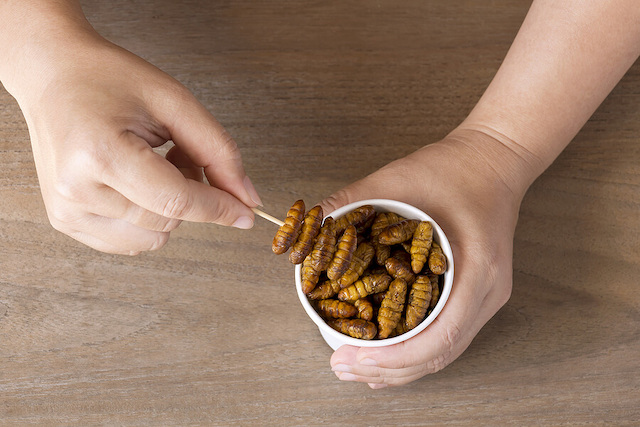For most of us who grew up in Singapore, we’re used to experiencing a wide variety of cuisines. But there are still times when foods of other cultures can still present quite a bizarre and unusual experience! Kimchi, bulgogi, and bibimbap are what we think of when someone says ‘Korean food’ – but there’s also a stranger, more shocking side to their cuisine!
For those who don’t live in Korea, or who haven’t gone too in-depth into learning about Korean food and culture, these foods may seem very weird – or even disgusting – to you. But for the adventurous foodies, these yummy treats should definitely be on your must-try list on your next visit to Korea!
1. Dakbal (Chicken feet)
You might not be a stranger to dakbal. Known as ‘phoenix’s feet’ in Chinese cuisine, Korea’s version of it simply calls it as it is – chicken feet.
If you’ve eaten chicken feet at dimsum restaurants before, you shouldn’t be too fazed about dakbal. But if you’ve never tried chicken feet in your life, this might take a little getting used to!
Dakbal is essentially seasoned cooked chicken feet, most often with a spicy red pepper paste. It is well-loved as a snack paired with soju – just be careful about all the tiny bones in them!
2. Beondegi (Silkworm pupae)
If you can read hangeul, you might have seen ‘beondegi’ being sold at street food stalls all around Korea. These are none other than silkworm pupae, either boiled or steamed, and served in a paper cup with skewers. They are frequently eaten as a snack and can be found as canned beondegi sold in convenience stores and supermarkets as well.
While many people might be irked at consuming these wriggly creatures, they are actually a nutritious, low-calorie, high-protein food. Fancy a cup of silkworm pupae on your post-workout diet meal, anyone?
3. Gaebul (Marine spoon worm)
Move over, silkworms – here comes the gaebul, known as the ‘fat innkeeper worm’. It is actually a type of marine spoon worm, found natively in the seas of East Asia.
If the thought of eating this phallic sea organism is bad enough to you, it won’t comfort you to know that they eat this raw in South Korea. It’s usually served sliced and seasoned with sesame oil, salt, and gochujang.
However, aside from the idea of it, gaebul is actually quite tasty, with a chewy texture and sweet and salty taste, much like clams. For the men, its aphrodisiac properties may give you one more reason to try it!
4. San-nakji (Raw octopus)
What is with Koreans and their fascination with raw dishes? If you can stomach your sashimi, you should try san-nakji – raw small octopus.
In some places, they eat the small octopus live and whole. But more commonly, the octopus is first killed before being chopped into smaller pieces. Although the octopus is no longer alive, the tentacles continue to wriggle due to remaining nerve activity.
With a mild flavour of the ocean, san-nakji is typically seasoned with sesame oil and seeds, along with a gochujang dip. Don’t forget to chew thoroughly, because the suction cups on the tentacles can present a choking hazard!
Part of learning about another culture is getting to know their cuisine! Strange as some of these may sound, they are tasty in their own rights. Will you be looking forward to trying any of these the next time you go to Korea?
Get ready for your next food hunt in South Korea by first having the language under your belt! Korean language courses at Sejong Korean Language School will equip you with all the necessary basics. Who knows, our native Korean teachers might even share some of their best-kept Korean food secrets with you!


